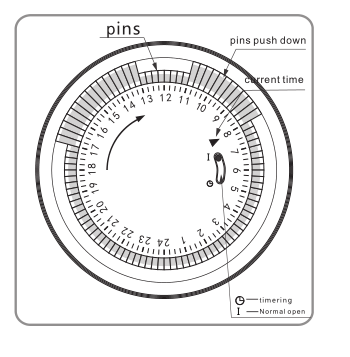New circuit designs developed by researchers can be printed on flexible conductive polymers, including clothing, to generate energy from body heat. These materials can power simple biosensors that monitor vital signs like heart rate and respiration. The technology is being explored by scientists at the Georgia Institute of Technology, who have created a wearable fabric structure embedded with p-type and n-type semiconductors. This allows clothing to convert body heat into electricity, which can either power biosensors or provide cooling for the wearer.
To enhance the efficiency of thermoelectric energy harvesting, the team used a mathematical pattern known as the Hilbert curve—developed by German mathematician David Hilbert. This space-filling curve offers a unique way to design circuits, enabling precise control over voltage and power output depending on the application. The first tests were conducted on paper, but the researchers believe the same pattern can be applied to fabrics and other soft conductive materials.
Akanksha Menon, a Ph.D. candidate in Professor Shannon Yee’s lab, explains that the Hilbert pattern is fractal and self-similar, meaning any part of it mirrors the whole. When applied to thermoelectric components, this design creates symmetrical lines that can be arranged to produce specific voltage outputs. This allows multiple elements to be printed on a single sheet and then cut along symmetry lines to achieve the desired performance.
The researchers also see potential for using these materials in reverse, where an electric current could be passed through the fabric to create a cooling effect on one side and heat on the other. Although this concept is still in development, it could lead to energy-efficient personal cooling systems, reducing the need for traditional air conditioning.
Currently, thermoelectric devices often use toxic inorganic materials, but Menon and Yee are exploring organic polymer alternatives that can be mass-produced using inkjet or roll-to-roll printing techniques. This approach not only makes the technology more sustainable but also opens the door for scalable, wearable applications.
The study, published in the *Journal of Applied Physics*, highlights how the Hilbert curve enables customization of thermoelectric materials after mass production. This allows for higher efficiency without the need for additional power conversion systems. A 25-cent coin-sized area can contain thousands of thermoelectric pins, with red and blue dots representing p-type and n-type polymers.
Looking ahead, the research team aims to optimize materials for specific wearable uses and ensure that comfortable clothing can generate enough energy to power sensor networks woven into garments. The project was supported by the Air Force Office of Scientific Research and PepsiCo Inc., marking an exciting step toward smart, energy-harvesting textiles.
Mechanical Timer
24 hours mechanical Timer
Instant indicator
Min.setting time:15 minutes. Max.setting timer:24 hours
With hand switch,can be switched to operating and
setting at any time
Instructions:

1. Set program: 1 pin is equivalent to 15 minutes. Determine desired start time and push down pins until desired
off time.
For instance, if you want electrical devices to work from 8:00am to 11:00am and from 13:00pm to 17:00pm, you
just need to put down allthe pins between the three period time.
2. Set the current time: Turning the dial clockwise until the arrow pointing to
current time.
For example,if now it is 8:00 am, please turn the dial and make sure the
arrow point to 8. (See the picture.)
3. Plug the electrical device directly into the timer. Make sure the electrical
device is power-on.
4. Plug the timer into electrical outlet and the electrical device will be work
according to the setting program.
Note: = Normal Ope n = Timing
Make sure the switch on the Timing position. If it
is on the [Normal Open" mode, the electrical device is
always power-on and the timer function no work.
Specifications:
Rated Voltage, Current and Power
|
As shown on the label
|
Time Setting Range
|
15minutes24hours
|
Working Temperature
|
-10℃?+55℃
|
Operation
|
Clockwise
|
Insulation Resistance
|
>100M
|
Inherent Loss
|
≤1W
|
Application:
1. To enable high-power electric appliances to run automatically at off-peak time if there is different electricity
price according to different periods of time in some areas.
2. To use for electric appliances which need time control, such as water heaters, air conditioners, drinking
fountains, rice cookers, advertising lights and so on.
3. To control the charging time. For example, battery of electric bikes or mobile phones, storage batteries, etc.
4. Occasions which need switch on/off frequently, like interval spray irrigation for flowersand lawn, cyclical
adding oxygen to fish jar, fountains and so on.
5. Home safety precautions and lighting.
Caution:
1.D o not exceed the maximum ratings of the timer.
2.M ust reset the current time after power failure.
3.D o not plug the timer directly into the working electrical appliances.
4.U nless changing the setting, keep the program same every day.
5.D o not disassemble timer by yourself. Professionals service are needed for maintenance.
6.T his item is only for indoor use.
Mechanical Timer, mechanical timer socket, 24hr mechanical timer, mechanical timer plug, mechanical timer adaptor
NINGBO COWELL ELECTRONICS & TECHNOLOGY CO., LTD , https://www.cowellsocket.com
